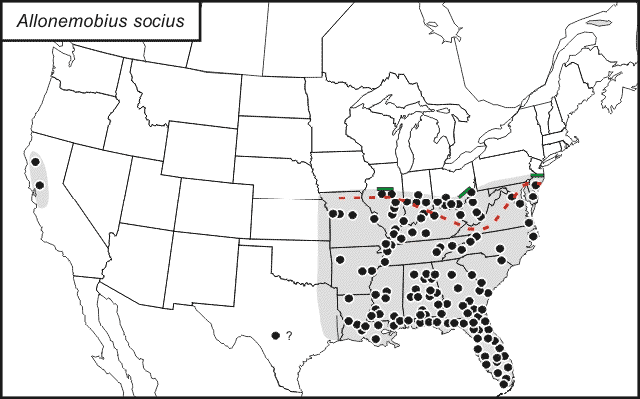



Allonemobius socius and A. fasciatus have no identifying morphological features nor can males be distinguished by their calling songs. The two species were originally distinguished by allozyme assay (Howard 1983) and, in those areas where both species occur, allozyme assay remains the only way to tell them apart. However, studies in the eastern states have shown that A. socius and A. fasciatus are southern and northern species respectively, which overlap in their distributions narrowly in Illinois and New Jersey and broadly in West Virginia (Howard & Waring 1991).
In the map above, the shaded area in the eastern United States is based on three north-south transects reported by Howard & Waring (1991). The three green bars indicate its northward limits along the transects. The approximate southern limits of A. fasciatus are indicated by the dotted red line. In the shaded area south of the dotted red line, the dots show county records of A. socius (because A. fasciatus does not occur so far south). Farther north, the dots represent either A. socius or A. faciatus. Farther west, the only certain records of A. socius are in California, where the species was probably introduced by human transport ( Weibel & Howard 2000a). A. fasciatus occurs in north central Texas ( Weibel & Howard 2000a), but the Texas record with a ? is farther south and may be A. socius.